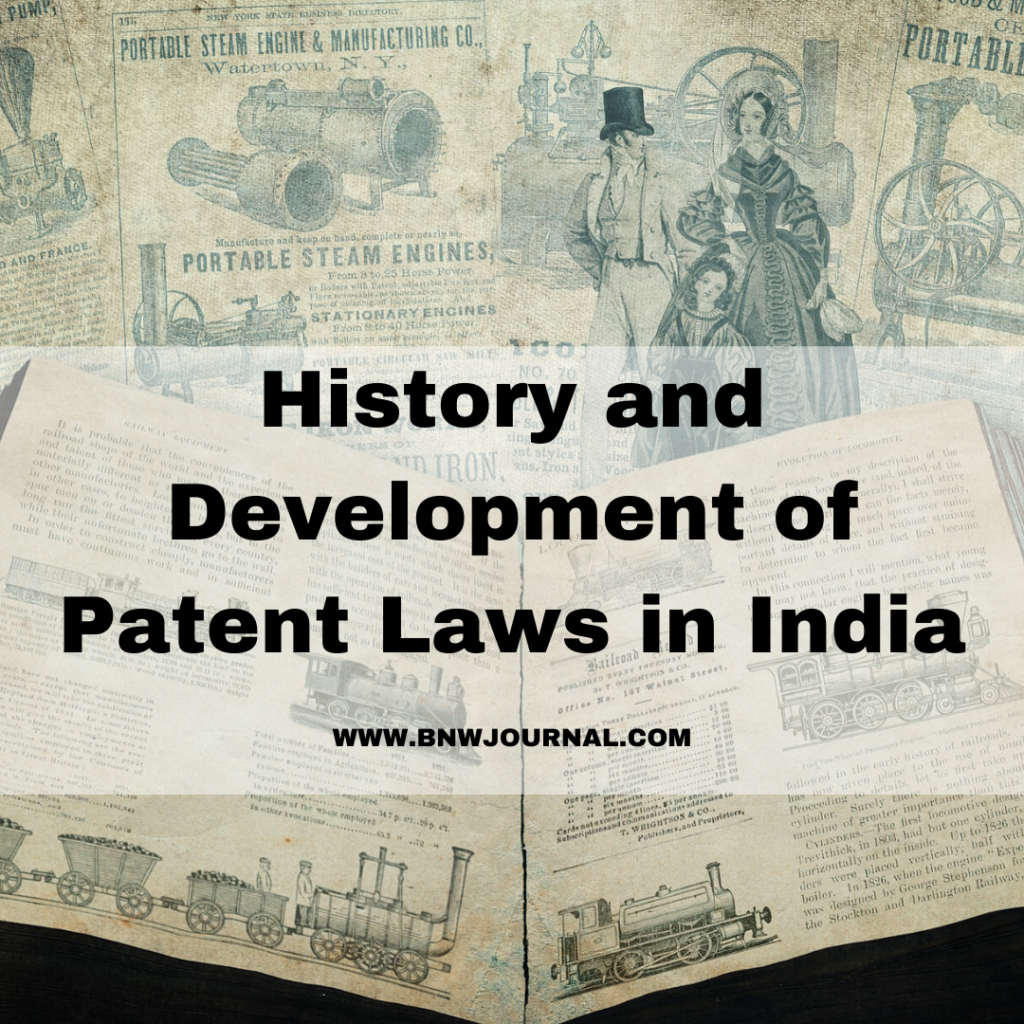![]()
Introduction
The word patent derive from a Latin word ‘Patene’ which means ‘To Open’. A patent is a legal document that is grant by the government of the state or the country as per the national rules. It gives an inventor of a particular thing. It gives the exclusive right to make, use, and sell his or her creation for a specific period. The patentee will be regard as the sole owner of the invention. The patent has the right to prevent any other source from using his inventions within the term of the patent.
Most of the commercial uses are covered in the rights granted by the patent owner. Another advantage of patenting an invention is that, it also grants licenses for its use to the other interested users. If a patent is grant in one country, it can be enforced in that country itself. Unless the invention is in the other country as well.

History and Development of the Indian Patent System
The Patent Act
The Act VI of 1856 was the first codification of the Indian Patents. Since it is enact without the approval of the British Crown, it was nullified by Act IX of 1857. In 1859, an Act XV was introduce for granting exclusive privileges. This amendment underwent certain modifications such as the grant of exclusive privileges to useful inventions only. And an extension of priority period from 6 – 12 months. The Act does not include importers while defining the term ‘inventor.’ It was further amend in 1872, 1883 and 1888. However, the Indian Patent and Design Act, 1911 annulled all the previous amendments. The Patent Act, 1970 accompany by the Patent Rules, 1972 came into existence on 20th April, 1972. And that ousted the Indian Patent and Design Act, 1911. This Act was enacted based on the suggestions stated in the report of Justice Ann.
Further Amendments
Amongst the many recommendations, one was regarding the allowance of drugs and other chemicals. It resulted in a further amendment in the year 2005 which expand the allowances under Patenting. After every amendment, there were certain exclusions which gave rise to further amendments. Another right which is exclude in the Act was the exclusive marketing rights for which a provision was introduce later. The road to patents is topped with research and funding. India as per the updates of 2019, spend about 0.7% of its gross domestic product on research and development in the year 2016-17. It is comparatively less than that spent by China and the United States. However, in the year 2018-2019, India examine over 85,400 patent applications which was five times the number in 2015-16. Many IP awareness programs were organize by the Indian government. One being in association with research organizations, universities, and industry associations.
The MicroGo case
A Chennai-based company name MicroGo which is use for water purification and sanitization of surgical devices without power or water was founded in 2016. The founder of the company applied to release an active molecule through water or air. The cost for filing of patent applications in India are a hurdle in the progress of start-ups.
As per the 2017 records, around 1,583 patent applications were file before the World Intellectual Property Organisation (WIPO). The IPR Cell organized many IPR related events to aim towards the growth and development of IPR.
Why is Patent necessary?
The basic objective of a patent is to motivate the inventors to protect and safeguard their creations. When the economy became the base of globalization, innovative opportunities and ideas started looming around to meet the ever-growing needs, wants, challenges, and opportunities of the world. The inventors start to come up with innovations that were likely to get copy and commercially exploit in the market if not make patent. Although the entire process of filing a patent is complex, one must remember the importance of it. Based on the recent developments, there is a probability for the process to get easier than it is at present. In case of an infringement, one can take help from the legal bodies and avoid the problems that can curb the overall growth.
What can be Patented?
To qualify for a patent, the invention is require to succeed in four basic tests:
- Involvement of an inventive step
- Something innovative and not previously discovered
- Novelty
- Industrial application capability or utility
What cannot be Patented?
Under Section 3 and 4 of the Patents Act, 1970, certain inventions cannot be patented which are as under:
- A frivolous invention.
- Invention used for public order or morality.
- Discovery of a scientific principle or formulation.
- Also discovery of a living or non-living substance in nature.
- Discovery of a new property or a new use for a known substance.
- Arrangement, rearrangement or duplication of known devices.
- Method of agriculture or horticulture.
- Any process for the medicinal, surgical, curative, prophylactic, diagnostic, therapeutic or other treatment of human beings.
- A mathematical or business method.
- Literary, dramatic, or musical artwork.
- A presentation of information.
- Atomic energy-related inventions.
- The topography of integrated circles.
Infringement of a Patent
Infringement is an act of selling any patented invention without the permission of the inventor. According to the Amendment under the Act of 2005, the validity of a patent is 20 years from the date of filing a patent application. And such validity apply to all the parents. If the patent is not renew after its expiry, a patent infringement proceeding can be initiat and the invention can be exploit.
The infringement process of a patent is quite similar to the one of a trademark as the term of both begins from the date of application. The period of limitation for filing a suit for patent infringement is up to 3 years from the date of infringement.
Conclusion
According to the above statistics, the recent development and efforts by the Indian Government are quite evident and promising. Further improvements in the Indian Patent System can be expect for times to come.



0 Comments